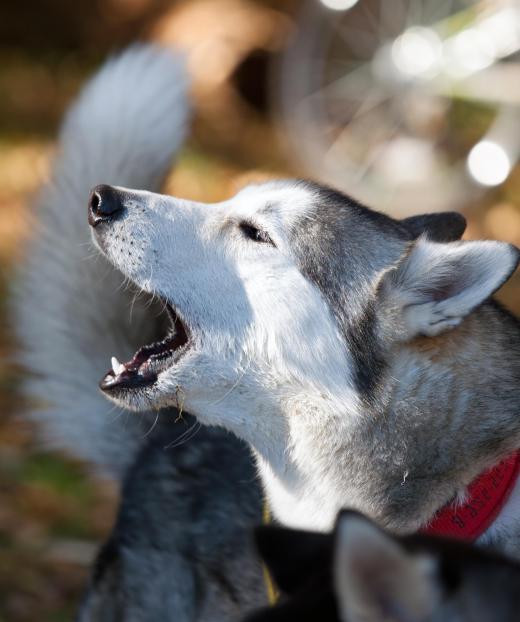Skijoring is more than just an activity between a person and a dog. It can also be considered a recreational form of bonding between an owner and man’s best friend. As a wintertime sport that has been well received in North America, skijoring only requires minimal equipment, a pair of waxed skis and several energetic and sufficiently trained dogs to send the snow flying. Since its rise in popularity, skijoring has been adapted for performance on other terrains besides snow, and dogs have been replaced with either horses or an operable vehicle like a snowmobile.
Skijoring had been long popular in Scandinavia and Alaska, and was called pulka in those places. Pulka was both a sport and transport method that used a dog and a pulka, a type of small sled. Usually the sled held supplies needed in traveling such as food or a tent for nomadic shelter. The skier is hitched to the back of the sled and pulled along like a caboose.

When a skier participates in skijoring, the skijor equipment needed usually consists of a harness fitted for the animal if one is doing the pulling; a waist-hugging belt, and a lead. The lead is attached to the harness, so that there is reasonable distance between the pulled and the puller to prevent accidents. Skijoring is a lot more enjoyable when runs are smooth, so many skiers choose to hot wax their skis for downsizing the amount of friction on them when gliding over the terrain.

Skijoring races are on average three to ten miles (4.82 to 16.09 kilometers) in length. Endurance races run a bit longer at about twenty to fifty miles (32.18 to 80.46 km). There are at least three dogs per skijoring racer; an optimal number that distributes weight evenly among the dogs but leaves them enough space to move when sprinting. Any medium to large sized dog in good health is a prime candidate. Siberian and Alaskan Huskies who already feel at home in the snow are especially appropriate, though Golden or Labrador Retrievers, Border Collies, and Saint Bernards are just as qualified.
Before racing, dogs should be trained in the classic mushing commands, which will facilitate better understanding between both parties as they become more practiced in skijoring. In areas where skijoring is popular, especially places with expected snowfall, courses are offered to the community on fundamentals of the sport. Topics covered may include choice and training of dogs, harness fitting, canine nutrition, skijoring gear and technique, and trail protocols. By following offered guidelines, skijoring aficionados can gain better experience, or use their skills to explore new variants, including utilizing a snowboard instead of skis, or grassjoring, in which the terrain is grass instead of snow.
